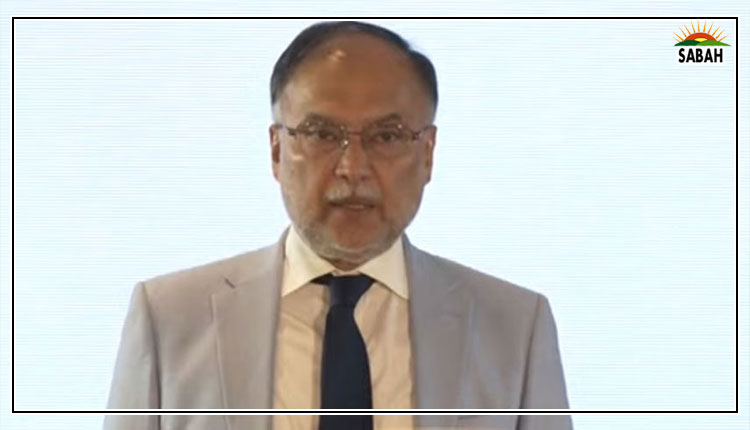Innovative economies…Atta-ur-Rahman
Innovation and entrepreneurship have now become the key drivers of fast-growing world economies. Countries that have realized this and are implementing aggressive strategies for implementation of national innovation and entrepreneurship policies are progressing rapidly with tremendous increases in their respective GDPs through innovation-led growth.
Let us consider a few examples. Finland has been internationally recognized as a global leader in innovation. The countrys innovation strategy emphasizes investment in research and development (R&D), education, and entrepreneurship. Notably, Finlands education system promotes a culture of creativity and critical thinking from an early age.
The Finnish government actively supports startups and fosters collaboration between academia and industry. This innovation-driven approach has resulted in the emergence of successful Finnish companies, such as Nokia and Rovio Entertainment. Nokia, for example, became a global leader in mobile communications, contributing significantly to Finlands GDP and employment. The countrys emphasis on technology and knowledge-intensive industries has significantly contributed to its economic growth. With a tiny population of 5.5 million, its per-capita GDP is over $50,000.
Another excellent example is that of Norway whose innovation policies are centred on creating a knowledge-based economy and driving sustainability. The countrys abundant natural resources, particularly in the energy sector, have served as a foundation for innovation. Norways innovation strategy involves significant investments in renewable energy technologies, such as hydropower and wind energy, which have bolstered economic growth and reduced carbon emissions. Moreover, Norways strong focus on research and development has stimulated innovation in sectors like oil and gas, fisheries, and maritime industries. With a population of 5.4 million, Norways per-capita GDP has reached $89,000, above that of the US.
Another Scandinavian country to learn from is Sweden which has established itself as an innovation powerhouse, with a thriving startup ecosystem and a highly skilled workforce. The Swedish government promotes collaboration between industry, academia, and government through initiatives like the Swedish Innovation Strategy.
Swedens success in innovation can be attributed to its investment in education, R&D, and infrastructure. Its strong support for research and development has enabled the emergence of successful companies in sectors like telecommunications, biotechnology, and manufacturing. With a population of 10.4 million, the GDP of Sweden is over $ 61,000.
The neighbouring Denmark also serves as a hub for innovation. Its emphasis on talent development, collaboration, and entrepreneurship has fuelled economic growth. Denmarks investments in renewable energy technologies, such as wind power, have made it a global leader in clean energy solutions. The export of renewable energy technologies has contributed to export revenues and job creation. Also, the countrys innovative design and architecture sectors have gained international recognition, attracting investments and boosting the economy. The per-capita GDP of Denmark is above $60,000.
Turning to Asia, Singapore stands out as a shining star. The city-states innovation strategy is built on three pillars: knowledge creation, entrepreneurship, and connectivity. It invests heavily in R&D and facilitates collaboration between research institutions, startups and multinational corporations. Singapore has established numerous organizations such as the Economic Development Board (EDB) and the Infocomm Media Development Authority (IMDA) to promote innovation and entrepreneurship.
Singapores focus on innovation-led growth has fostered advancements in sectors like biotechnology, financial services and smart city solutions. With a population of about 5.5 million a quarter of that of Karachi Singapore has exports worth $400 billion, and its per-capita GDP is $73,000. The exports of Pakistan, which has a population of 230 million, are stuck at around $32 billion, while our per-capita GDP is a dismal $1,400.
Korea too has emerged as a global leader in technology and innovation. Its innovation policies concentrate on supporting key industries like electronics, semiconductors, automotive, and robotics. The close collaboration between industry, academia, and government, commonly known as the triple helix model, has been instrumental in Koreas innovation success. Its commitment to innovation has propelled it to become a global technology hub. The per-capita GDP of South Korea was only $106 in 1962 it is now above $33,000.
Chinas rapid economic growth is closely linked to its commitment to innovation. Its emphasis on developing advanced manufacturing capabilities and investing in emerging technologies like artificial intelligence and 5G has propelled its economic growth and global competitiveness. Its innovation policies prioritize research and development, intellectual property protection, and industrial upgrading.
Chinas large domestic market and government support have fuelled innovation, resulting in the rise of technology companies like Alibaba, Tencent, and Huawei. The per-capita GDP of China was only $162 in 1962. It is above $12,000 today. Never in history have the lives of so many people been transformed so quickly.
Innovation strategies and policies have played a pivotal role in the economic success of Finland, Norway, Sweden, Denmark, Korea, Singapore, and China. Each country has adopted unique approaches tailored to their specific strengths and challenges. Finland and Sweden have excelled in creating conducive environments for research, education, and entrepreneurship. Norway has capitalized on its natural resources and sustainability agenda. Denmark has emphasized collaboration and entrepreneurship. Korea has focused on technology-driven industries. Singapore has leveraged its strategic location and connectivity. China has capitalized on a large domestic market and industrial upgrading.
The lessons that Pakistan can draw from the rapid economic progress of these countries is that the real wealth of any country in this day and age is the quality of the human resource and the ability of the country to unleash the potential therein through investments in quality education, science, technology and innovation.
For that to happen, the government itself must be led by the most brilliant minds in the country and not by self-seeking politicians with tainted credentials. Second, there needs to be a strong and fair judicial system in place where justice is delivered swiftly and fairly. Third, there needs to be an excellent Ease of Doing Business environment paralleling that of Singapore or Finland. Once these key ingredients are in place magic can happen, as our population is generally hardworking and creative.
The past political system has failed badly, and time is ripe for major reforms in our system of governance so that the role of parliament is limited to law making and oversight and ministers are selected (not elected) from the most eminent experts in the country in their respective disciplines.
Courtesy The News












